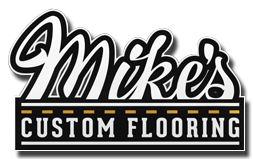Hardwood is affected by moisture which can result in cupping, buckling or even crowning. Crowning is when the center of the broad bows upwards. When crowning occurs in your hardwood floor it can often be repaired and extend the life of the wood. However, if continually exposed to water, it will require the wood floor to be replaced. Mike’s Custom Flooring will share how crowning in hardwood floors is done and how to repair it.
What is Hardwood Floor Crowning or Cupping?
Wood is considered a living material and will continue to be affected by the environment around it, including that inside the home. Moisture affects wood in many ways. Over exposure to moisture causes the wood to absorb the moisture. In turn, this causes the wood to expand but they sometimes swell beyond natural expectation. When the humidity or other forms of excess moisture cause multiple boards to swell, the center of the boards will bow upwards which is known as crowning.
Repair or Replace Damaged Hardwood Floors
Before repairing wood that has crowned, you will need the hardwood to be completely dry. In order to dry hardwood that has been exposed to excess moisture and where crowning has occurred; you will want to use both fans and dehumidifiers. It is vital to dry hardwood that sits on a sub floor or on a second floor to make sure the flooring underneath is dried out as well. Once the drying process is complete, assess the water damage. Determine if you will want to continue to take the effort to repair the wood or decide if it’s better to replace the wood floor. Only after extreme water exposure from a flood does hardwood floor need to unquestionably be replaced.
How to Sand Hardwood Floors
To repair crowning you will want to use a sander. Start with a coarse grit sand paper and sand the wood flat. This will work on natural hardwood, but not on engineered wood. Depending on the amount of warping or how high the crowning, there might be as much as ¼ of an inch taken off of the wood during the sanding. Sanding hardwood is best done with a drum sander using 20-grit sandpaper for best performance. When sanding wood you must always go with the natural grain of the wood. Sand down the crowns on the boards. Afterward, sand down the affected areas. Once the wood is flattened, the wood will need to be smoothed out using fine grit sandpaper. Sanding with higher grain sandpaper provides a much smoother finish. After the wood is sanded and smoothed out you will need to reapply the sealer or stain to blend in the rest of the floor if only a portion of the floor was repaired. If the entire floor needed to be repaired, you will need to re-stain and seal the wood.
Hardwood Floor Repair & More in Charles Town & Eastern Panhandle of Berkeley & Jefferson Counties in WV | Winchester & Frederick County | Round Hill & Loudoun County | Berryville & Clarke County | Herndon & Fairfax County VA
When hardwood floors get exposed to water they undergo changes within the wood grain that cause warping which in some cases can be repaired. However, there are times when the damages are beyond repair and require full replacement. If you’re not sure if you can repair your wood floor, contact Mike’s Custom Flooring. We provide wood floor inspections, repair or installation of new wood flooring. For all your wood flooring needs, contact Mike’s Custom Flooring today. We offer a dustless sanding service to minimize dust and disruption to your home during the sanding process!





